溫馨提示×
您好,登錄后才能下訂單哦!
點擊 登錄注冊 即表示同意《億速云用戶服務條款》
您好,登錄后才能下訂單哦!
這篇文章主要為大家展示了“Python面向對象和類的示例分析”,內容簡而易懂,條理清晰,希望能夠幫助大家解決疑惑,下面讓小編帶領大家一起研究并學習一下“Python面向對象和類的示例分析”這篇文章吧。
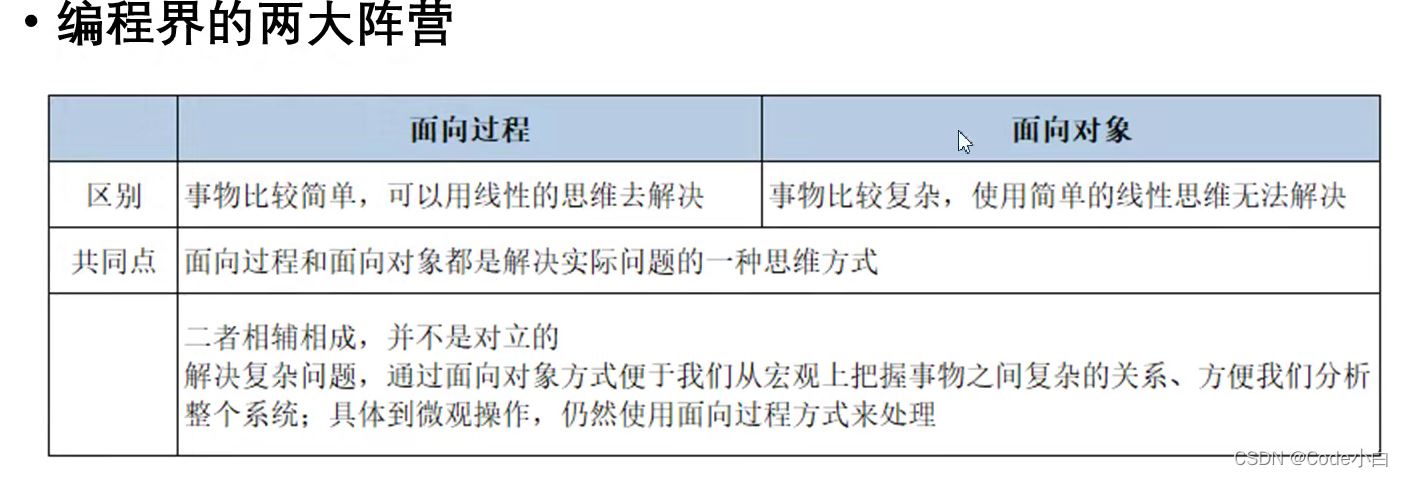
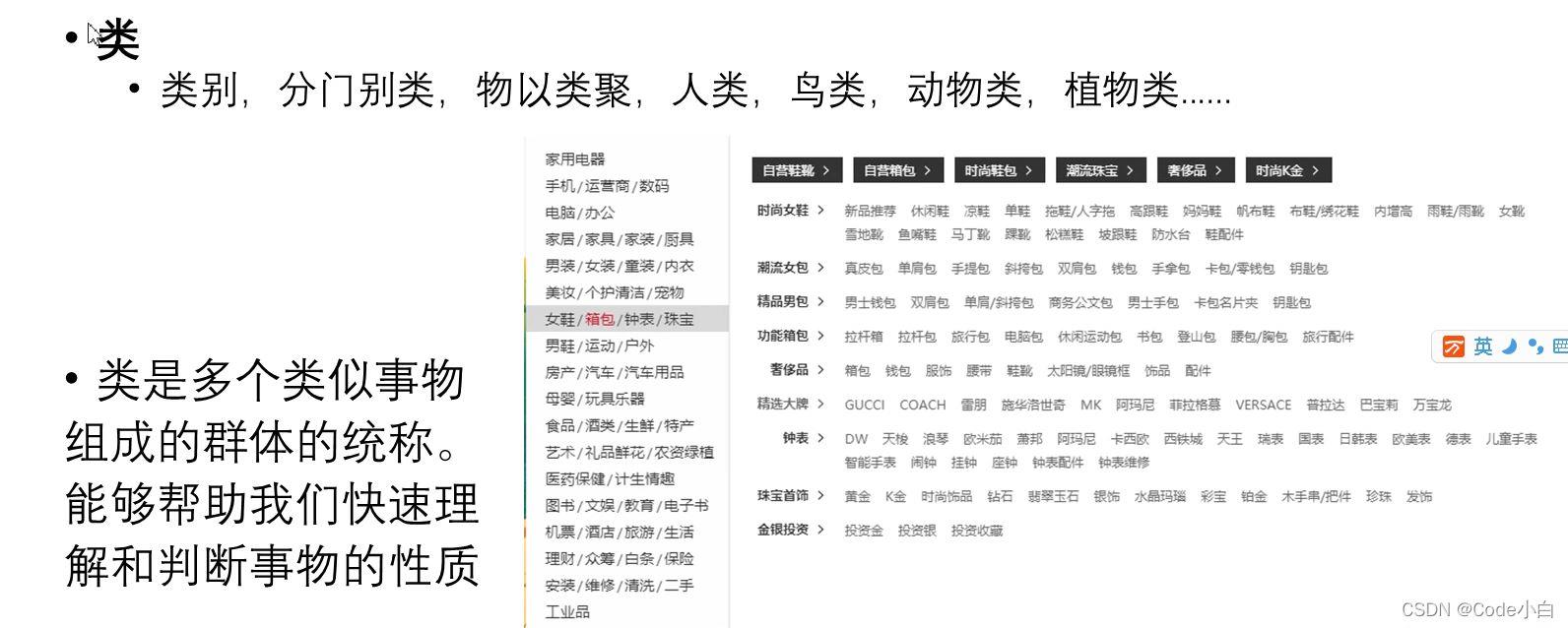
簡單舉例:
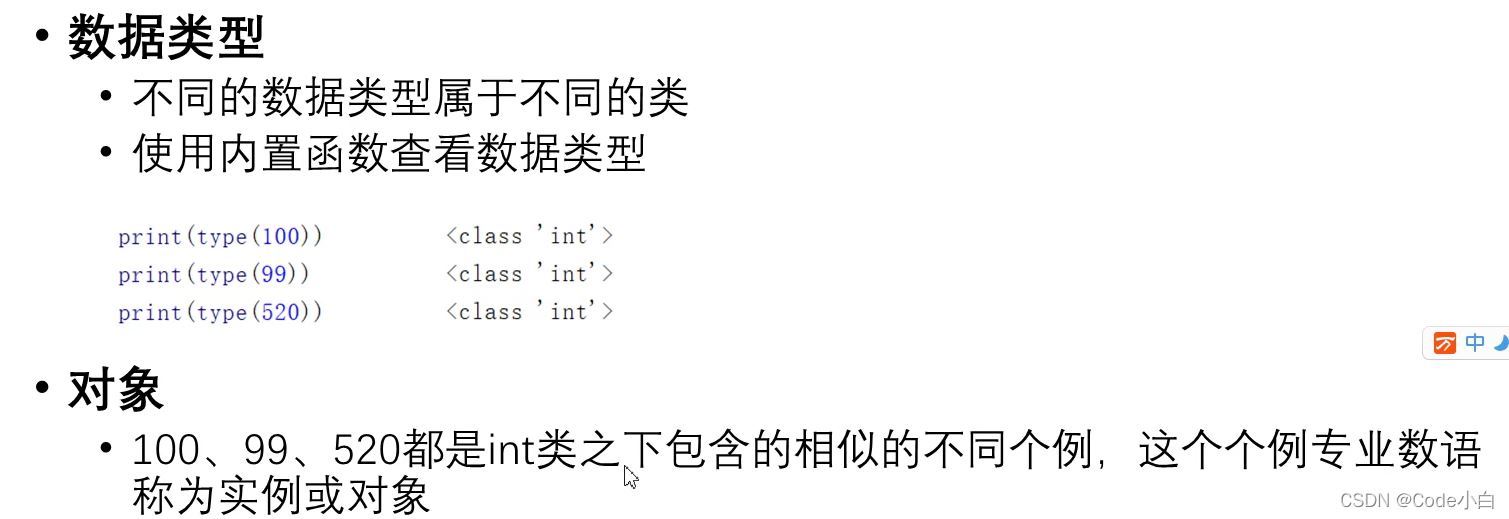
python中一切皆對象,開局一張圖:
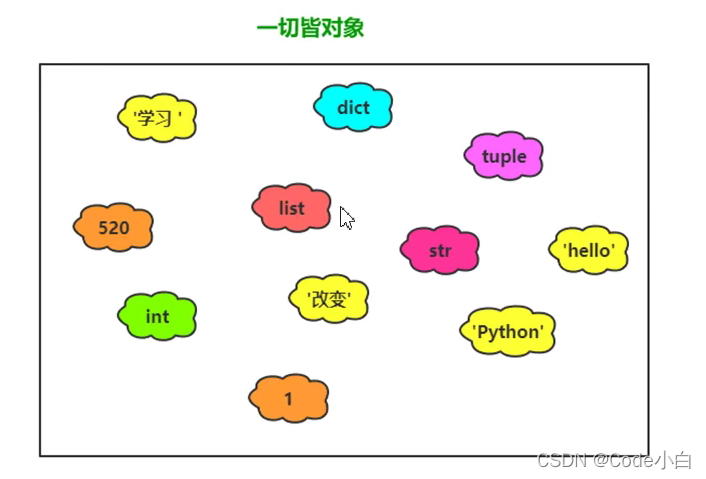
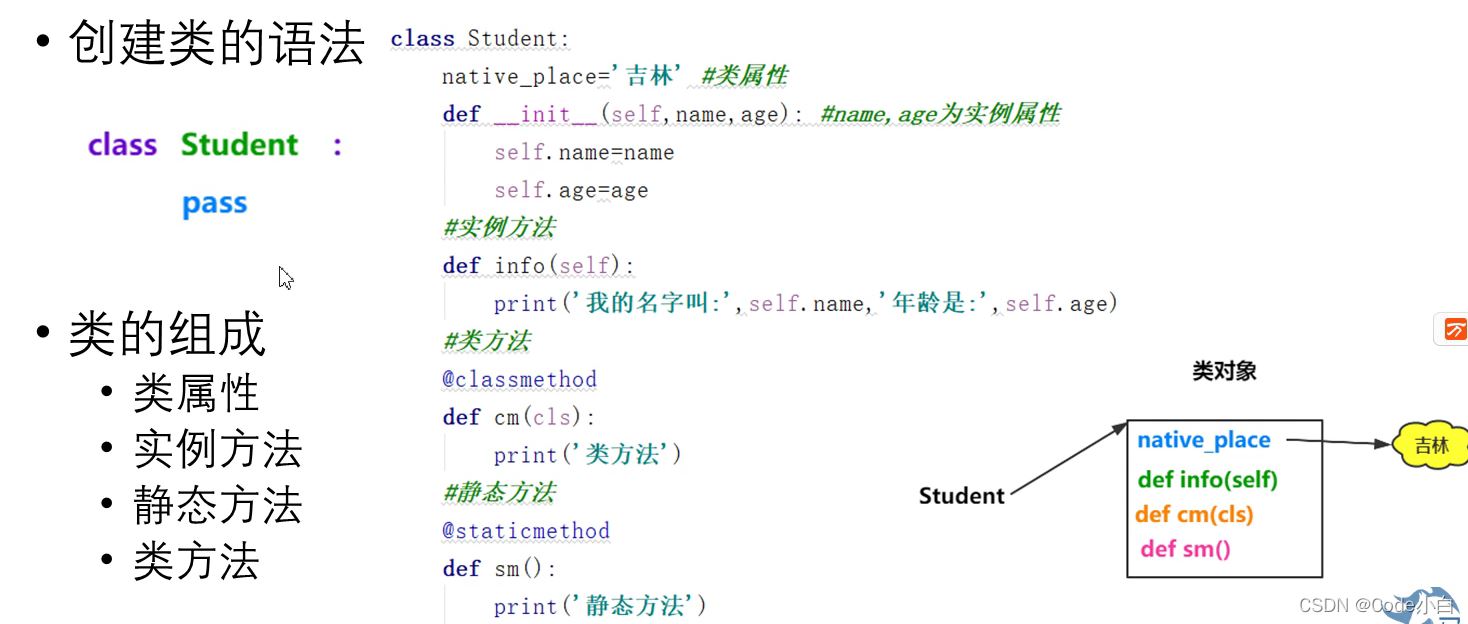
舉例1:
class Student: pass print(id(Student)) #1149225945800 print(type(Student)) #<class 'type'> print(Student) #<class '__main__.Student'>
舉例2:
class Student:
native_place='吉林' #類屬性
def __init__(self,name,age):
self.name=name
self.age=age
#實例方法
def eat(self):
print("學生在吃飯")
#靜態方法
@staticmethod
def method():
print("我是靜態方法")
#類方法
@classmethod
def cm(cls):
print("我是類方法")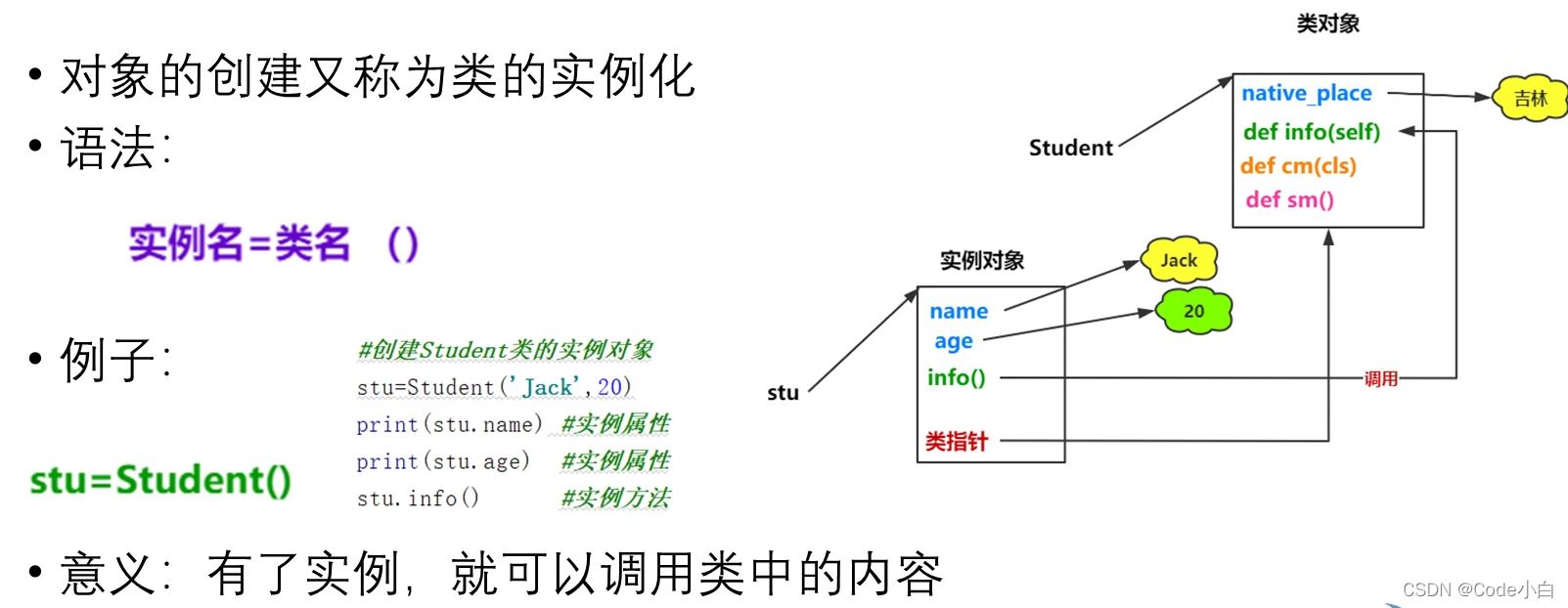
舉例1:
#實例對象
student1=Student("張三",18)
print(student1)
print(id(student1))
print(type(student1))
print("-------------------------------------------")
#類對象,代表所在的類
print(Student)
print(id(Student))
print(type(Student))舉例2:
#實例對象
student1=Student("張三",18)
print(student1.name)
print(student1.age)
#實例方法調用有以下兩種使用:
print(student1.eat())
print(Student.eat(student1))
舉例1:類屬性
#類屬性
student1=Student("張三",18)
student2=Student("李四",19)
print(Student.native_place) #吉林
print(student1.native_place)#吉林
print(student2.native_place)#吉林
Student.native_place='四川'
print(student1.native_place)#四川
print(student2.native_place)#四川
#---------------------------------------------------------
student1.native_place='廣東'
print(student1.native_place)#廣東
print(student2.native_place)#四川舉例2:類方法、靜態方法
#類方法、靜態方法使用
student1=Student("張三",18)
Student.method()#我是靜態方法
Student.cm()#我是類方法Python是動態語言,在創建對象之后,可以動態的綁定屬性和方法
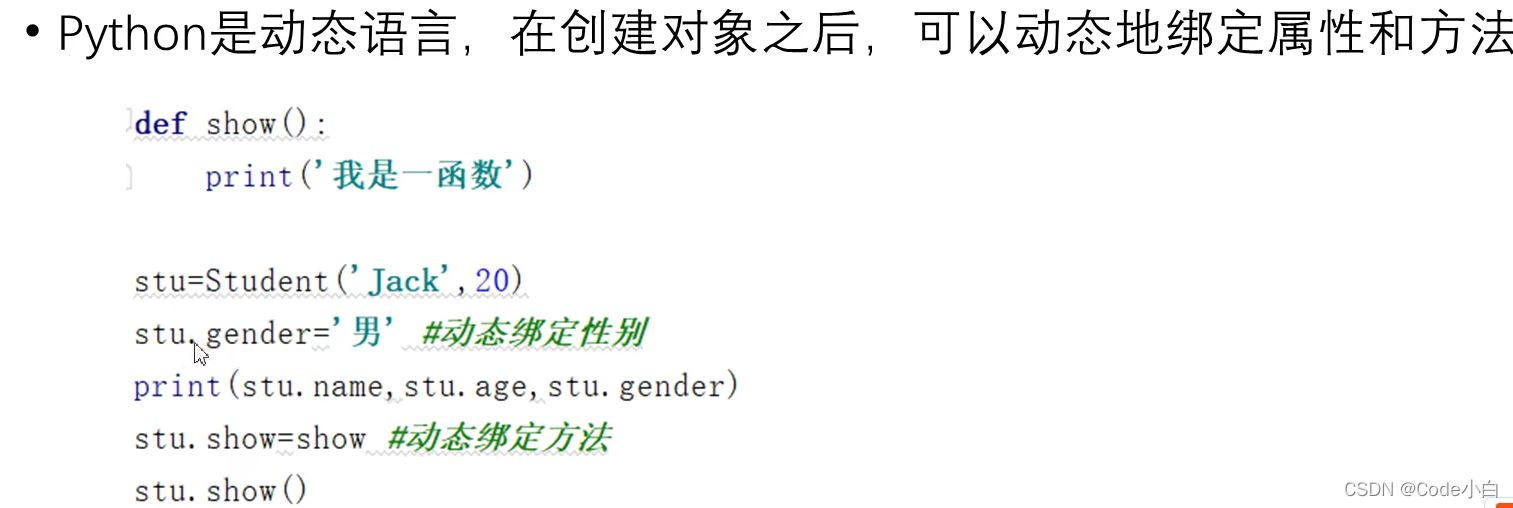
舉例:屬性綁定
class Student:
def __init__(self,name,age):
self.name=name
self.age=age
#實例方法
def eat(self):
print("學生在吃飯")
student1=Student('張三',19)
student2=Student('李四',20)
print(id(student1)) #2363920157896
print(id(student2)) #2363920157960
print("--------綁定屬性-------")
print("綁定屬性-----為student2動態的綁定gender屬性-------")
student2.gender='男'
print(student1.name,student1.age) #張三 19
#print(student1.gender) 當student1訪問其沒有的屬性時,會報錯AttributeError: 'Student' object has no attribute 'gender'
print(student2.name,student2.age,student2.gender) #李四 20 男
print("--------綁定方法-------")
def show():
print('我是show方法')
student1.show=show
student1.show() #我是show方法
student2.show() #報錯AttributeError: 'Student' object has no attribute 'show'內存分析:
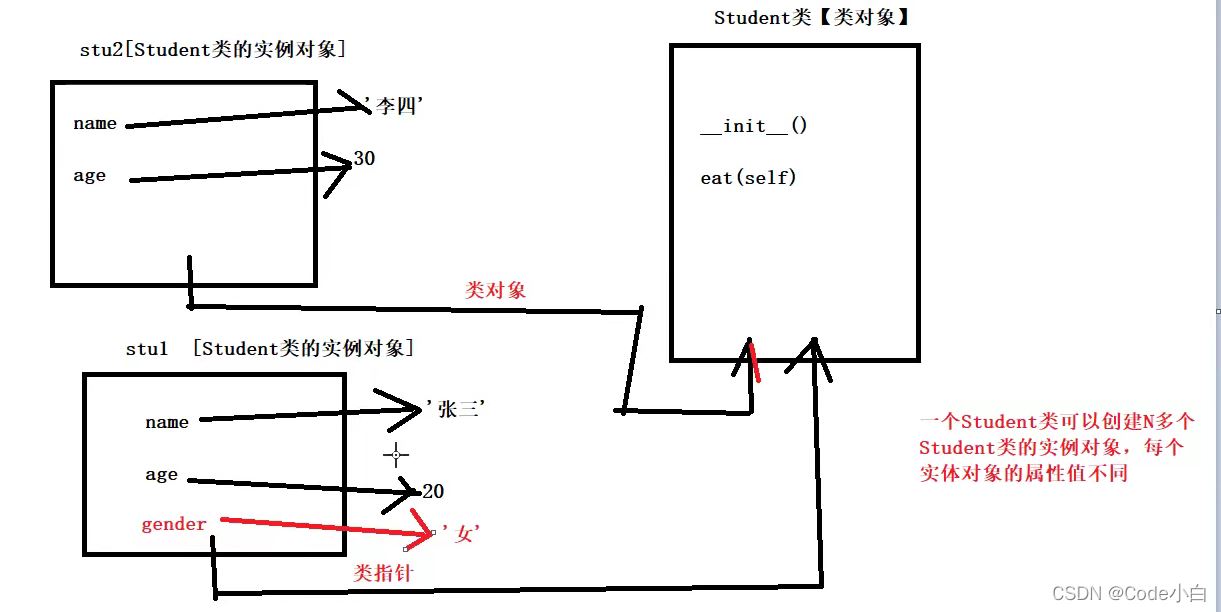
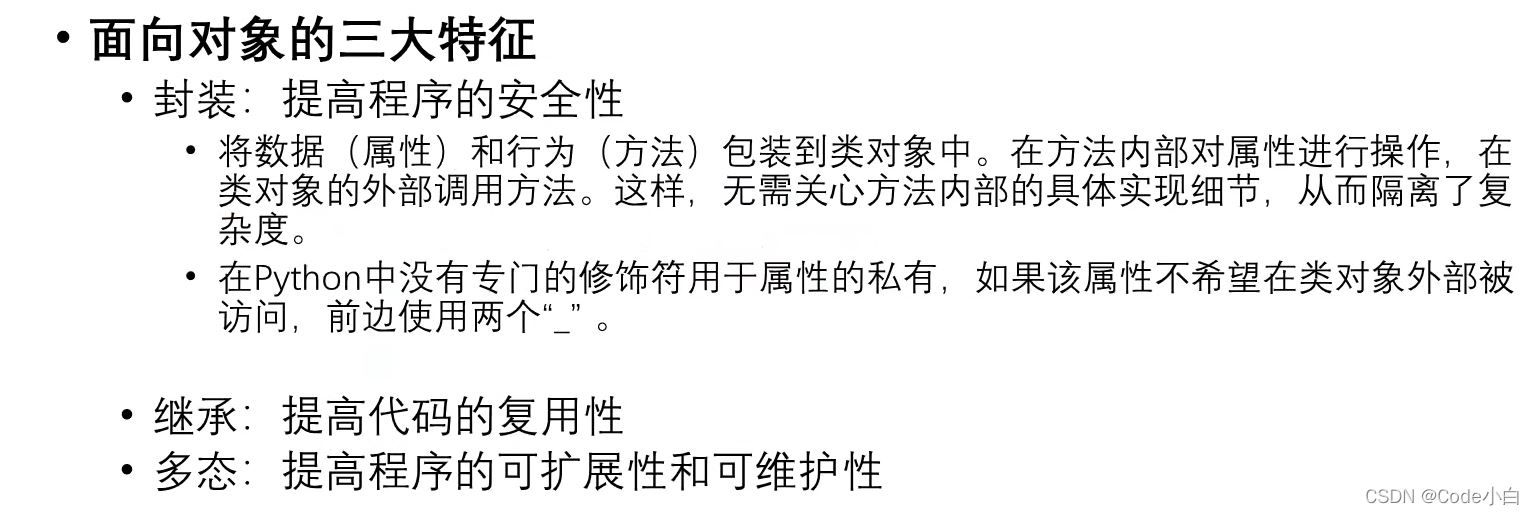
1、封裝
class Car:
def __init__(self,brand,age):
self.brand=brand
self.__age=age
def show(self):
print(self.brand,self.__age)
car1=Car('寶馬X5',50)
print(car1.brand) #寶馬X5
# print(car1.__age) __標識的屬性限制其在類外使用,在類的內部可以使用,在外面訪問是會報錯
#若要使用__標識的屬性,可以先用dir()查出屬性,再訪問
print(dir(car1))
#輸出['_Car__age', '__class__', '__delattr__', '__dict__', '__dir__', '__doc__', '__eq__', '__format__', '__ge__', '__getattribute__', '__gt__', '__hash__', '__init__', '__init_subclass__', '__le__', '__lt__', '__module__', '__ne__', '__new__', '__reduce__', '__reduce_ex__', '__repr__', '__setattr__', '__sizeof__', '__str__', '__subclasshook__', '__weakref__', 'brand', 'show']
print(car1._Car__age)#502、繼承(與其他語言不同,python支持多繼承)
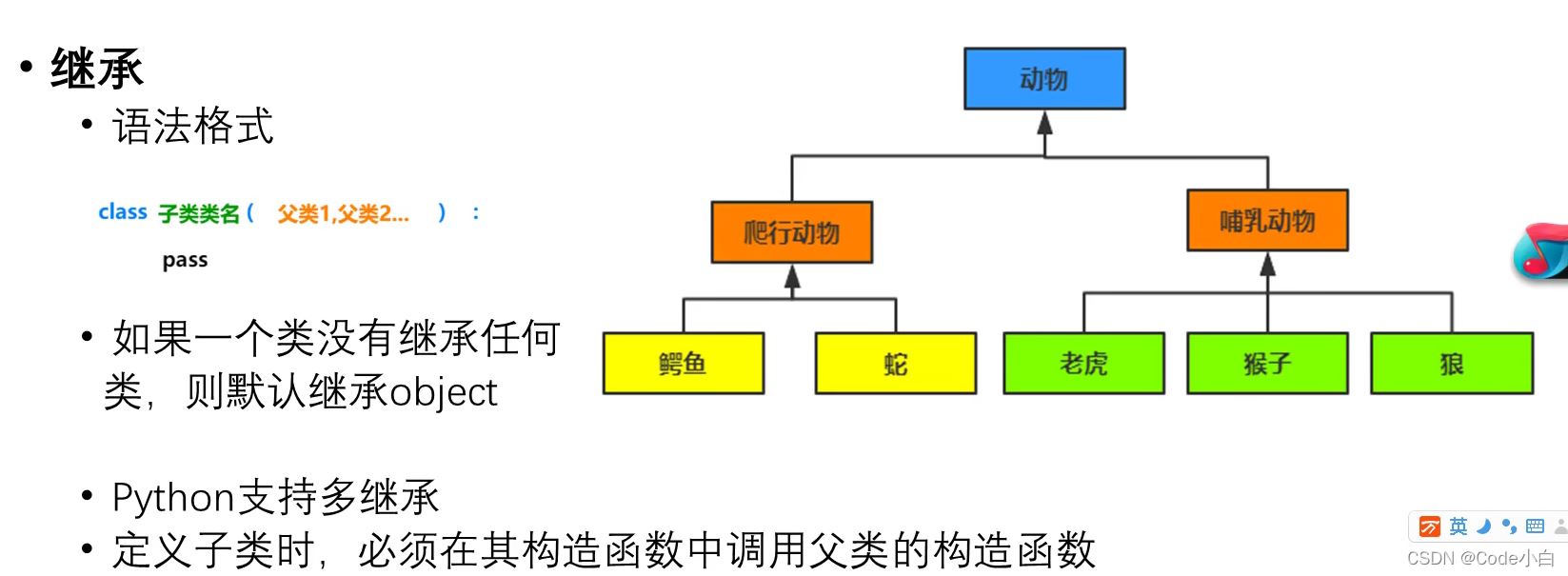
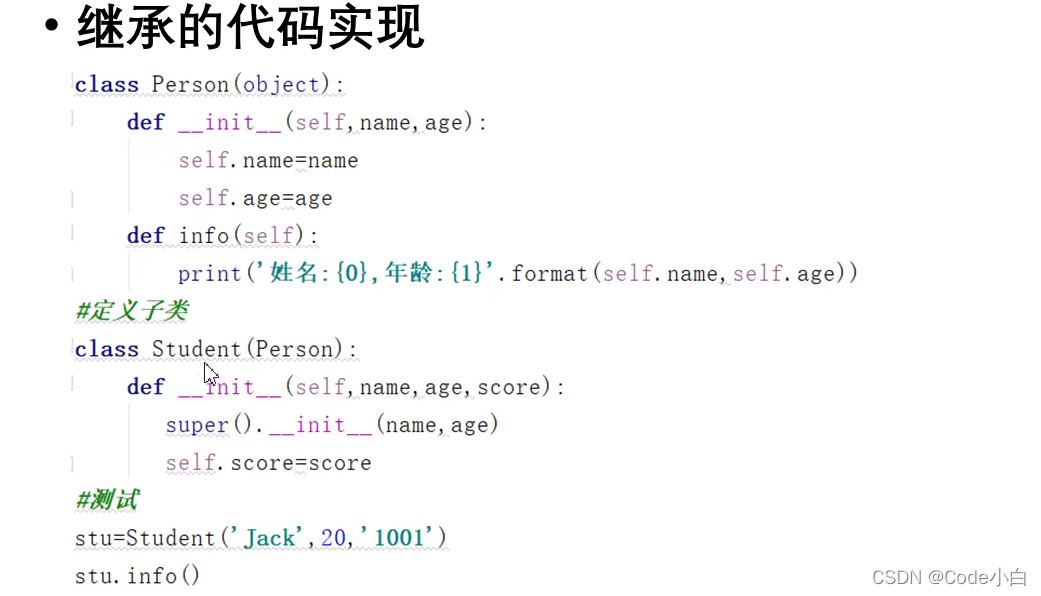
舉例:
class People:
def __init__(self,name,age):
self.name=name
self.age=age
def info(self):
print(self.name,self.age)
class Student(People):
def __init__(self,name,age,sno):
super().__init__(name,age)
self.sno=sno
class Teacher(People):
def __init__(self,name,age,teachofage):
super().__init__(name,age)
self.teachofage=teachofage
student1=Student('張三',18,122)
teacher1=Teacher('李四',36,10)
student1.info() #張三 18
teacher1.info() #李四 36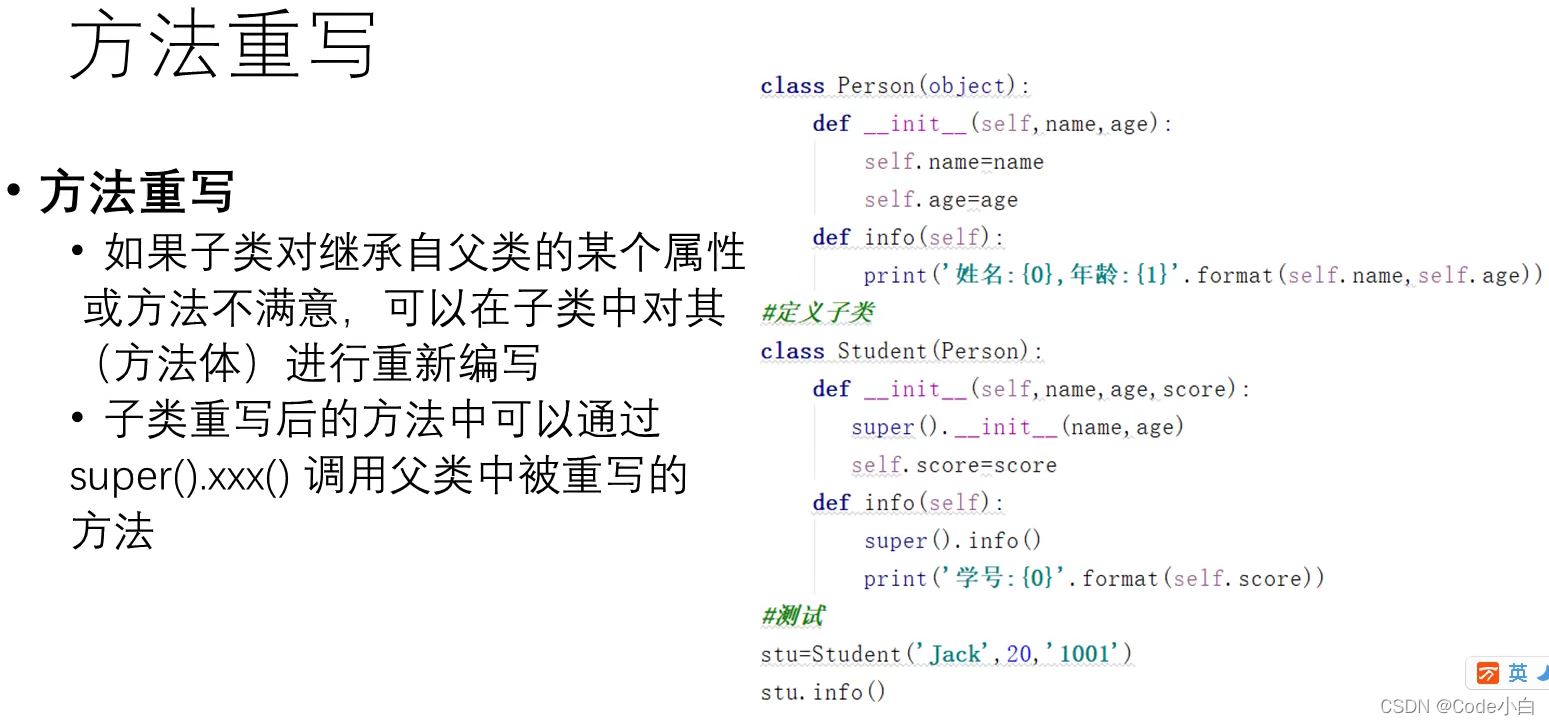
舉例:
class People:
def __init__(self,name,age):
self.name=name
self.age=age
def info(self):
print(self.name,self.age)
class Student(People):
def __init__(self,name,age,sno):
super().__init__(name,age)
self.sno=sno
def info(self):
super().info()
print(self.sno)
class Teacher(People):
def __init__(self,name,age,teachofage):
super().__init__(name,age)
self.teachofage=teachofage
def info(self):
super().info()
print(self.teachofage)
student1=Student('張三',18,122)
teacher1=Teacher('李四',36,10)
student1.info()
teacher1.info()結果為:
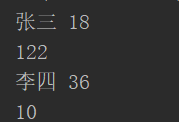
以上是“Python面向對象和類的示例分析”這篇文章的所有內容,感謝各位的閱讀!相信大家都有了一定的了解,希望分享的內容對大家有所幫助,如果還想學習更多知識,歡迎關注億速云行業資訊頻道!
免責聲明:本站發布的內容(圖片、視頻和文字)以原創、轉載和分享為主,文章觀點不代表本網站立場,如果涉及侵權請聯系站長郵箱:is@yisu.com進行舉報,并提供相關證據,一經查實,將立刻刪除涉嫌侵權內容。